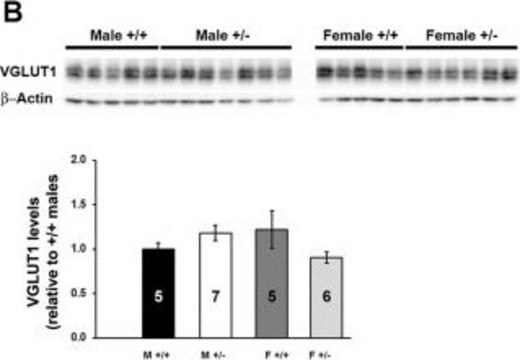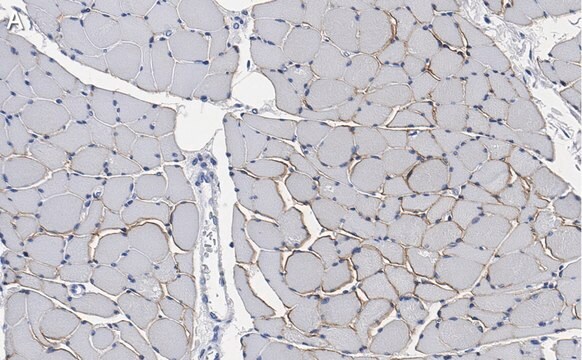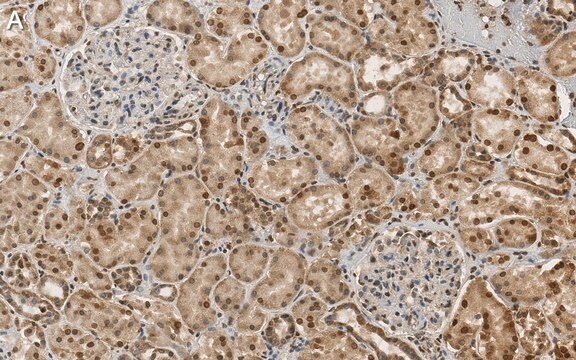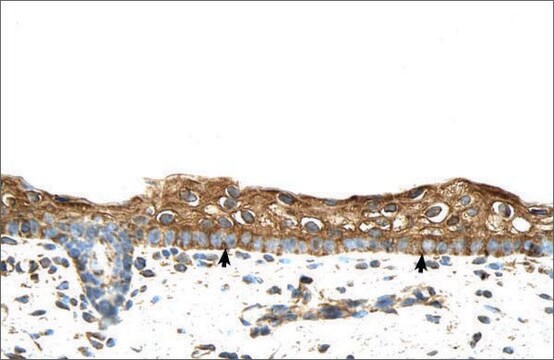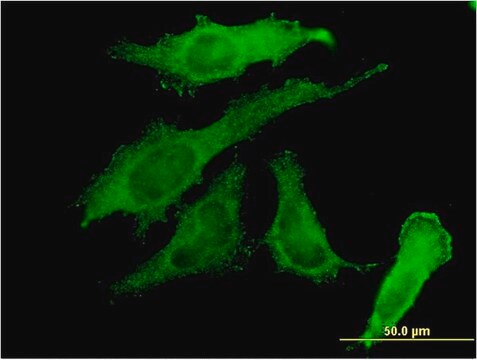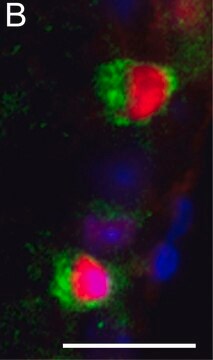ABN1362
Anti-RBPMS Antibody
from rabbit, purified by affinity chromatography
Synonim(y):
RNA-binding protein with multiple splicing, RBPMS, RBP-MS, Heart and RRM expressed sequence, Hermes
About This Item
WB
western blot: suitable
Polecane produkty
pochodzenie biologiczne
rabbit
Poziom jakości
forma przeciwciała
affinity isolated antibody
rodzaj przeciwciała
primary antibodies
klon
polyclonal
oczyszczone przez
affinity chromatography
reaktywność gatunkowa
human, mouse, rat
metody
immunofluorescence: suitable
western blot: suitable
numer dostępu NCBI
numer dostępu UniProt
Warunki transportu
wet ice
docelowa modyfikacja potranslacyjna
unmodified
informacje o genach
human ... RBPMS(11030)
Opis ogólny
Specyficzność
Immunogen
Zastosowanie
Neuroscience
Sensory & PNS
Immunofluorescence Analysis: A representative lot detected RBPMS immunoreactivity primarily associated with cell bodies located in the ganglion cell layer (GCL) of paraformaldehyde-fixed mouse retinas by fluorescent immunohistochemistry using whole-mounted retinas (Rodriguez, A.R., et al. (2014). J. Comp. Neurol. 522(6):1411-1443).
Immunofluorescence Analysis: An 1:5,000 dilution of a representative lot detected RBPMS immunoreactivity among cells in the ganglion cell layer (GCL) of paraformaldehyde-fixed mouse retinas by fluorescent immunohistochemistry (Courtesy of Dr. Nicholas Brecha, David Geffen School of Medicine at UCLA).
Jakość
Western Blotting Analysis: 0.5 µg/mL of this antibody detected RBPMS in 10 µg of mouse embryonic stem cell (mESC) lysate.
Opis wartości docelowych
Postać fizyczna
Przechowywanie i stabilność
Inne uwagi
Oświadczenie o zrzeczeniu się odpowiedzialności
Nie możesz znaleźć właściwego produktu?
Wypróbuj nasz Narzędzie selektora produktów.
polecane
Kod klasy składowania
12 - Non Combustible Liquids
Klasa zagrożenia wodnego (WGK)
WGK 2
Temperatura zapłonu (°F)
Not applicable
Temperatura zapłonu (°C)
Not applicable
Certyfikaty analizy (CoA)
Poszukaj Certyfikaty analizy (CoA), wpisując numer partii/serii produktów. Numery serii i partii można znaleźć na etykiecie produktu po słowach „seria” lub „partia”.
Masz już ten produkt?
Dokumenty związane z niedawno zakupionymi produktami zostały zamieszczone w Bibliotece dokumentów.
Nasz zespół naukowców ma doświadczenie we wszystkich obszarach badań, w tym w naukach przyrodniczych, materiałoznawstwie, syntezie chemicznej, chromatografii, analityce i wielu innych dziedzinach.
Skontaktuj się z zespołem ds. pomocy technicznej
